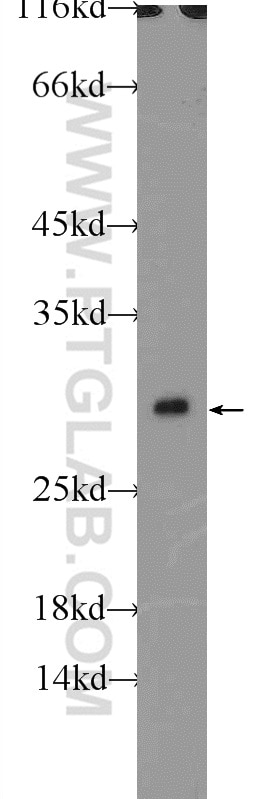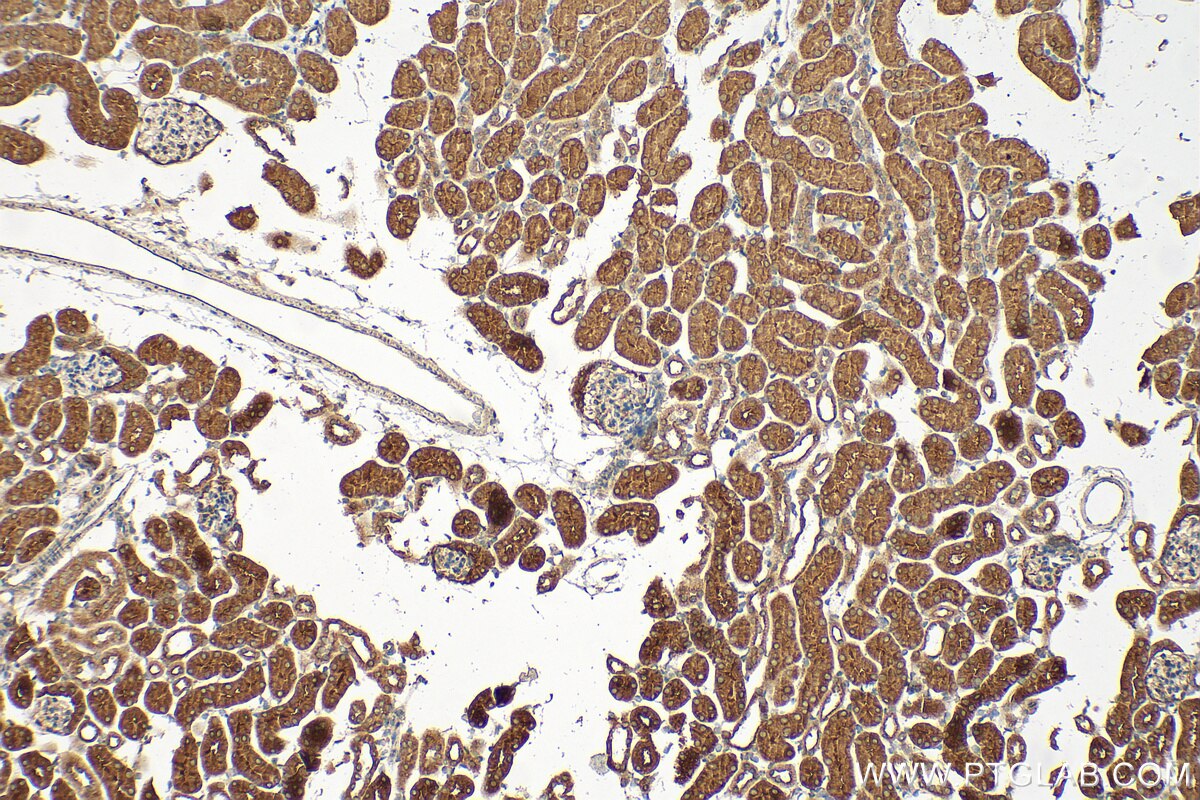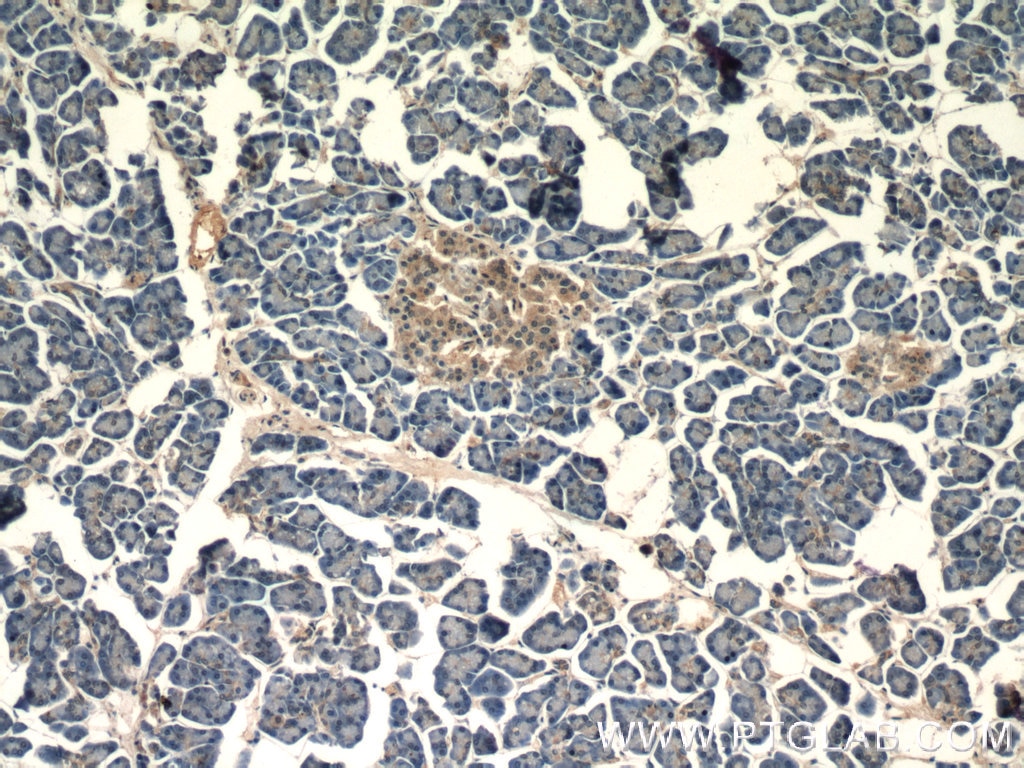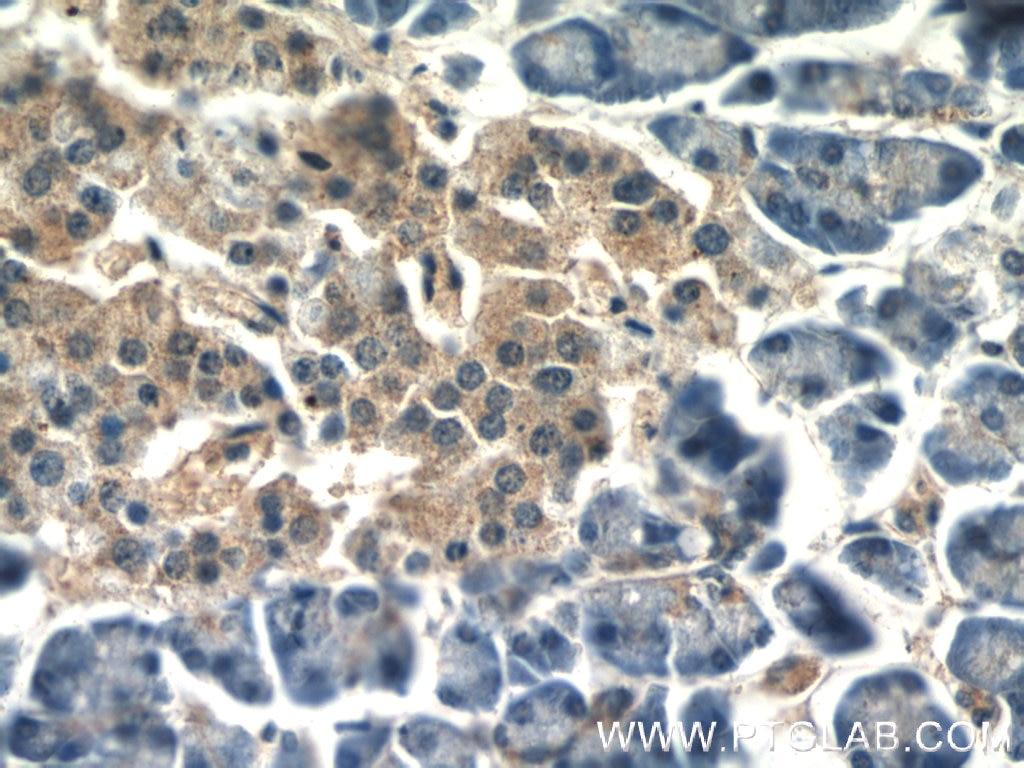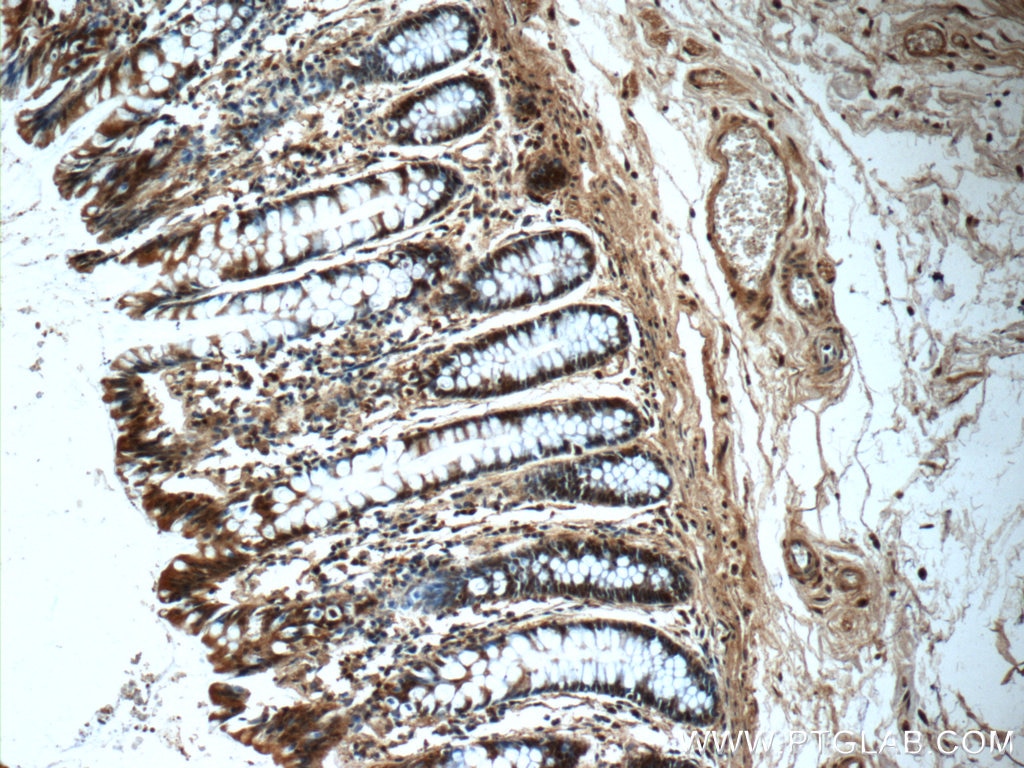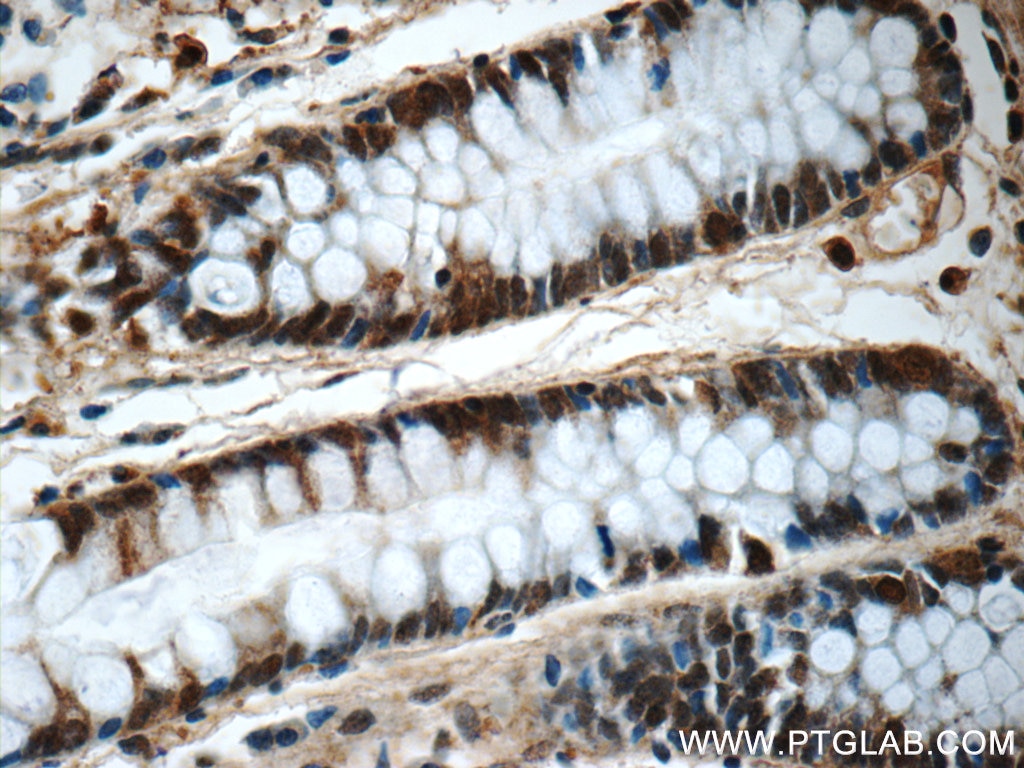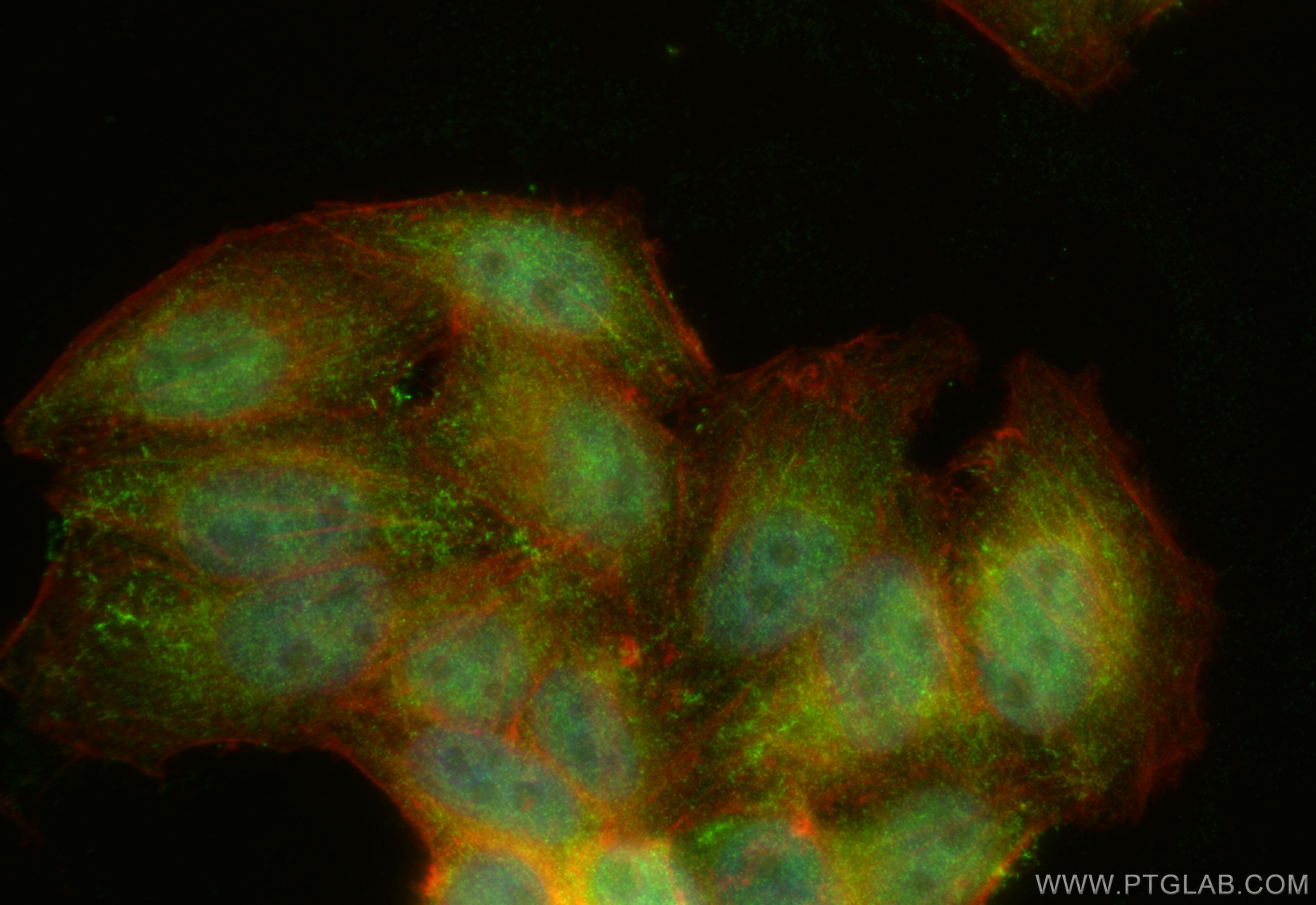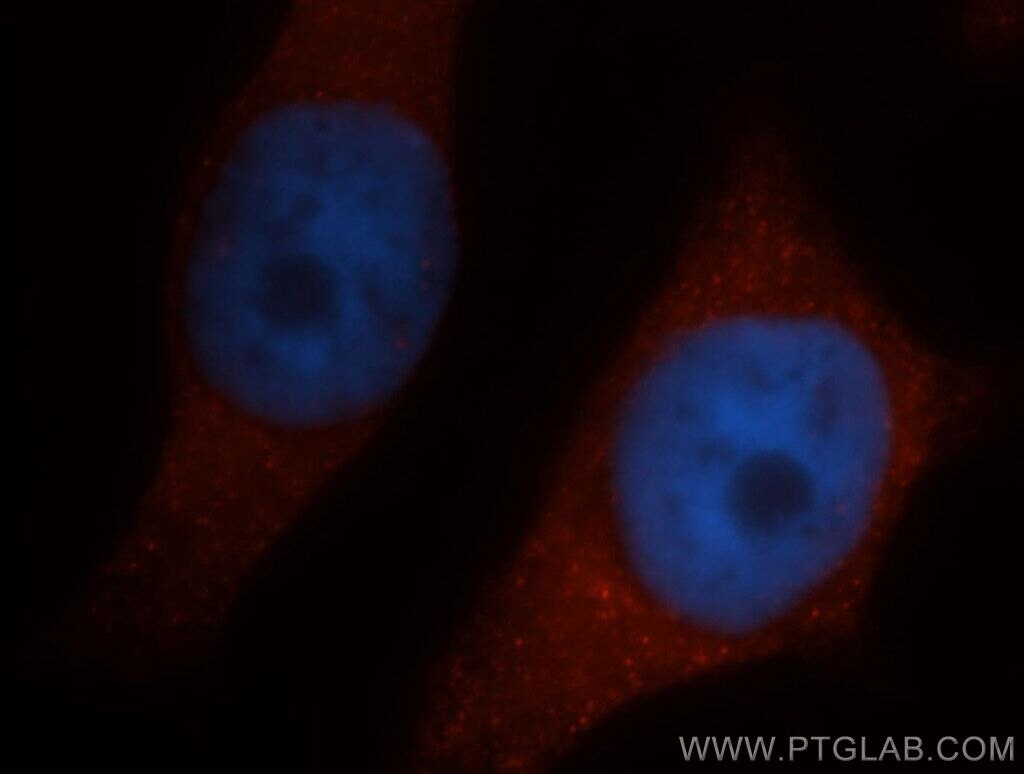- Featured Product
- KD/KO Validated
CLIC1 Polyklonaler Antikörper
CLIC1 Polyklonal Antikörper für WB, IHC, IF/ICC, IP, ELISA
Wirt / Isotyp
Kaninchen / IgG
Getestete Reaktivität
human, Maus, Ratte
Anwendung
WB, IHC, IF/ICC, IP, ELISA
Konjugation
Unkonjugiert
Kat-Nr. : 14545-1-AP
Synonyme
Geprüfte Anwendungen
| Erfolgreiche Detektion in WB | HL-60-Zellen, HeLa-Zellen |
| Erfolgreiche IP | HeLa-Zellen |
| Erfolgreiche Detektion in IHC | Maus-Kolongewebe, humanes Kolongewebe, humanes Pankreasgewebe, Mausnierengewebe Hinweis: Antigendemaskierung mit TE-Puffer pH 9,0 empfohlen. (*) Wahlweise kann die Antigendemaskierung auch mit Citratpuffer pH 6,0 erfolgen. |
| Erfolgreiche Detektion in IF/ICC | HepG2-Zellen, HeLa-Zellen |
Empfohlene Verdünnung
| Anwendung | Verdünnung |
|---|---|
| Western Blot (WB) | WB : 1:500-1:1000 |
| Immunpräzipitation (IP) | IP : 0.5-4.0 ug for 1.0-3.0 mg of total protein lysate |
| Immunhistochemie (IHC) | IHC : 1:200-1:800 |
| Immunfluoreszenz (IF)/ICC | IF/ICC : 1:50-1:500 |
| It is recommended that this reagent should be titrated in each testing system to obtain optimal results. | |
| Sample-dependent, check data in validation data gallery | |
Veröffentlichte Anwendungen
| KD/KO | See 2 publications below |
| WB | See 6 publications below |
| IHC | See 4 publications below |
| IF | See 2 publications below |
Produktinformation
14545-1-AP bindet in WB, IHC, IF/ICC, IP, ELISA CLIC1 und zeigt Reaktivität mit human, Maus, Ratten
| Getestete Reaktivität | human, Maus, Ratte |
| In Publikationen genannte Reaktivität | human, Maus, Ratte |
| Wirt / Isotyp | Kaninchen / IgG |
| Klonalität | Polyklonal |
| Typ | Antikörper |
| Immunogen | CLIC1 fusion protein Ag6049 |
| Vollständiger Name | chloride intracellular channel 1 |
| Berechnetes Molekulargewicht | 27 kDa |
| Beobachtetes Molekulargewicht | 27-32 kDa |
| GenBank-Zugangsnummer | BC064527 |
| Gene symbol | CLIC1 |
| Gene ID (NCBI) | 1192 |
| Konjugation | Unkonjugiert |
| Form | Liquid |
| Reinigungsmethode | Antigen-Affinitätsreinigung |
| Lagerungspuffer | PBS with 0.02% sodium azide and 50% glycerol |
| Lagerungsbedingungen | Bei -20°C lagern. Nach dem Versand ein Jahr lang stabil Aliquotieren ist bei -20oC Lagerung nicht notwendig. 20ul Größen enthalten 0,1% BSA. |
Hintergrundinformationen
Chloride intracellular channel protein 1 (CLIC1) is a member of the chloride intracellular channel protein family. It plays a crucial role in various cellular processes, including the regulation of chloride ion transport, cell viability, and mitochondrial function. CLIC1 is involved in the formation of membrane-inserted channels that facilitate chloride ion movement, which is essential for maintaining cellular homeostasis and function (PMID: 32116799). Additionally, CLIC1 has been implicated in cancer progression, where it influences cell proliferation, migration, and invasion (PMID: 38027011).
Protokolle
| PRODUKTSPEZIFISCHE PROTOKOLLE | |
|---|---|
| WB protocol for CLIC1 antibody 14545-1-AP | Protokoll herunterladen |
| IHC protocol for CLIC1 antibody 14545-1-AP | Protokoll herunterladenl |
| IF protocol for CLIC1 antibody 14545-1-AP | Protokoll herunterladen |
| IP protocol for CLIC1 antibody 14545-1-AP | Protokoll herunterladen |
| STANDARD-PROTOKOLLE | |
|---|---|
| Klicken Sie hier, um unsere Standardprotokolle anzuzeigen |
Publikationen
| Species | Application | Title |
|---|---|---|
Nat Commun CLICs-dependent chloride efflux is an essential and proximal upstream event for NLRP3 inflammasome activation. | ||
Alzheimers Res Ther Circular RNA APP contributes to Alzheimer's disease pathogenesis by modulating microglial polarization via miR-1906/CLIC1 axis | ||
Oxid Med Cell Longev Attenuation of ROS/Chloride Efflux-Mediated NLRP3 Inflammasome Activation Contributes to Alleviation of Diabetic Cardiomyopathy in Rats after Sleeve Gastrectomy. | ||
Transl Oncol Chloride intracellular channel 1 promotes esophageal squamous cell carcinoma proliferation via mTOR signalling
| ||
Cell Biochem Biophys CLIC1 Inhibition Protects Against Cellular Senescence and Endothelial Dysfunction Via the Nrf2/HO-1 Pathway. | ||
Anticancer Res Chloride Intracellular Channel 1 Expression Is Associated With Poor Prognosis of Lung Adenocarcinoma. |

